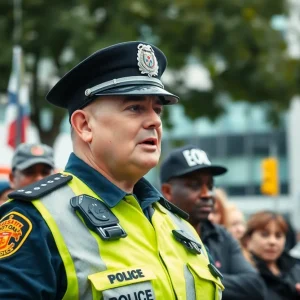Asheville Begins Annual Bike and Pedestrian Data Collection
On Tuesday, the city of Asheville demonstrates its commitment to active transportation once again as it kicks off its annual bike and pedestrian data collection. This important initiative seeks to understand trends among non-motorized transport users, paving the way for improved public safety and decision-making related to transportation policies and city infrastructure.
Data Collection and Volunteering Opportunities
For this year’s effort, Asheville has opened two different ways for citizens to volunteer and lend a helping hand. The first is a more traditional approach – the bike and pedestrian count, where volunteers tally the number of non-motorized users on city streets at predetermined locations. The second way to help out revolves around a user survey of Asheville’s greenways, with particular focus on the Wilma Dykeman Greenway and Reed Creek Greenway.
By counting users and surveying their behaviors, shift patterns, and economic impact on greenways, the city aims to gain insight into how these spaces are used and the potential for future development and investment.
2019 Data Insights and Looking to the Future
Drawing attention to last year’s data may be disheartening as bicycling and walking numbers saw a decline. According to the data, 2019 witnessed the lowest number of bikers and pedestrian participants across all survey sites, with a 7% decline in biking and 21% decrease in walking compared to 2018. However, this stagnation only outlines the numbers of certain pre-assigned data for an allotted period.
Active transportation advocates emphasize the limited timeframe of this survey. Affirming that the use of bicycles and people walking continues to rise despite what the previous year’s numbers suggest. Additionally, there is an encouraging argument to not only participate in the survey but also to use it as a platform to raise awareness about the transportation challenges that Asheville, like many growing cities, faces.
The Need for Different Modes of Transportation
More than enhancing safety provisions for bike riders, authorities argue that Asheville has a broader transportation problem that needs to be addressed. As the city grows, it’s clear that traditional solutions, like street parking or parking decks, will prove to be insufficient. The costs of driving are increasing and alternatives must be considered for the city’s future.
Therefore, the need for facilities that encourage and enable the use of bicycles, walking, public transit, and lightweight personal transport solutions like scooters is more important than ever. Emphasizing that Active transportation is indeed a critical part of Asheville’s future.
The city of Asheville requests all interested volunteers to sign up on their website. The bike and pedestrian data collection will occur from 5-7 p.m. Tuesday-Thursday and from 9-11 a.m. Saturday. The greenway user survey will be conducted on Tuesday and Saturday.






